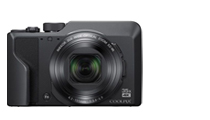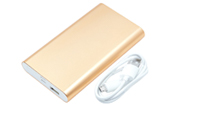1. Introduction: Tracing the Significance of Fishing Lines in Human History
Fishing has been an essential activity for human civilizations for thousands of years, serving as a cornerstone of survival, trade, and cultural identity. From the earliest bone and plant fiber lines to today’s engineered smart lines, this journey reflects not just material progress but a deep evolution in human problem-solving and innovation. The humble fishing line—often overlooked—stands as a silent bridge between ancient manual craftsmanship and the digital precision of modern technology. Its transformation from silk thread to sensor-integrated line reveals foundational principles that echo across fields from textiles to wearable devices. This article explores how fishing lines shaped early material science, inspired mechanical precision, and ultimately paved the way for smart equipment—connecting past ingenuity to future tech ecosystems.
1. From Thread to Technology: The Material Science Roots of Fishing Line Innovation
1.1 Early Material Selection and Its Functional Limitations
Long before synthetic polymers, early fishing lines were crafted from natural fibers like silk, hemp, flax, and plant-based strands. These materials, chosen for availability and tensile strength, carried clear limitations—silk offered smooth casting but degraded quickly in wet conditions; hemp was durable but stiff and prone to fraying. Each fiber imposed strict performance boundaries, shaping early fishing techniques and tools. For example, hand-spun silk lines limited casting distance and line reliability, demanding constant maintenance and expert handling. These constraints underscored a fundamental challenge: how to balance strength, flexibility, and longevity in a single thread.
1.2 The Transition from Natural Fibers to Engineered Synthetics
The real breakthrough began with the discovery and refinement of synthetic fibers. Nylon, introduced in the 1930s, revolutionized fishing line tech—offering superior tensile strength, abrasion resistance, and consistent performance in water. This shift wasn’t just material; it was a leap in functional reliability. Engineers learned that line performance depended not just on strength but on controlled elasticity and low stretches—qualities engineered through polymer chemistry. These advances mirrored broader industrial trends, where material science drove innovation across sectors, from aerospace to sportswear. The fishing line thus became a testbed for understanding how synthetic design could optimize both mechanical behavior and environmental resilience.
1.3 How Material Constraints Drove Early Problem-Solving in Fishing Gear
Material limitations directly inspired ingenuity. Fishing communities developed hybrid techniques—like winding natural fibers with wax coatings to reduce friction and improve water resistance—or used braided constructions to distribute stress. These solutions, born from necessity, laid groundwork for modern composite materials and braided line architectures. Early innovators realized that performance hinged not just on raw material but on design—how strands were twisted, layered, and secured. This mindset of iterative refinement, driven by physical constraints, prefigured today’s approach to sensor integration and smart feedback, where material behavior guides algorithmic response.
2. From Manual Craft to Mechanical Precision: The Mechanization of Fishing Lines
2.1 Hand-spun Silk Lines and Their Variability in Performance
Hand-spun silk lines, prized for their smoothness and casting feel, suffered from inconsistent quality. Variability in twist, thickness, and fiber alignment meant every line performed differently—affecting accuracy and reliability. This instability demanded standardization, pushing artisans and manufacturers toward mechanical spinning methods that could control tension and uniformity. The shift from artisanal to industrial production wasn’t just about scale; it was about introducing precision as a design principle, a precursor to automated quality control in modern gear manufacturing.
2.2 The Introduction of Industrial Spinning Techniques and Consistency Gains
Industrial spinning technologies, such as ring spinning and later open-ended spinning, transformed the landscape. By precisely controlling fiber feed, twist rate, and tension, these machines produced lines with predictable strength and elasticity. This consistency enabled reliable casting dynamics and reduced failure rates—critical for both recreational and commercial fishing. Moreover, uniformity allowed for systematic testing, laying the foundation for performance metrics now standard in sports equipment and sensor-laden gear. The idea that repeating, scalable production could enhance function became a core tenet of tech innovation.
2.3 Early Mechanical Innovations Influencing Line Durability and Casting Efficiency
Mechanical advancements—like automated winding, braiding machines, and tension-controlled spools—dramatically improved line durability and casting efficiency. Braided lines, for example, offered superior strength-to-thickness ratios and reduced stretch, enhancing accuracy and reducing breakage. Tension monitoring during production enabled real-time quality checks, foreshadowing digital feedback systems. These innovations shifted focus from reactive repair to proactive design optimization—principles now central to smart equipment that adapts via live data.
3. The Hidden Influence of Fishing Line Design on Digital Feedback Systems
3.1 Signal Transmission Principles Inspired by Line Tension Sensing
Just as angler skill depended on reading line tension, modern sensors detect force, stretch, and vibration to inform system responses. Early line tension principles inspired analog signal pathways—tension changes translated into mechanical feedback, much like today’s strain gauges in smart lines. This foundational insight—that physical strain carries actionable data—paved the way for embedded electronics that monitor line behavior in real time, enabling adaptive casting and performance alerts.
3.2 Data Logging Concepts Derived from Tracking Line Performance in Real Time
Analog data logging emerged from tracking line behavior during use—recording stretch, tension cycles, and breakage points to refine design. These early logs mirrored modern digital telemetry, where data feeds algorithms to optimize function. Fishing communities’ empirical record-keeping, though manual, anticipated the feedback loops central to IoT-enabled gear, proving that continuous monitoring improves reliability and user experience.
3.3 Early Analog-to-Digital Mapping in Sport Fishing Tracking Devices
Pioneering sport fishing instruments, like early line tension meters and casting angle meters, used rudimentary analog-to-digital conversion—mechanical dials paired with resistive elements to translate tension into readable values. These devices, though basic, introduced the concept of translating physical input into quantifiable signals—an essential step toward today’s smart lines equipped with accelerometers, gyroscopes, and wireless data transmission.
4. Bridging Past and Future: How Analog Fishing Tech Paved the Way for Smart Equipment
The evolution from hand-spun silk to smart line reflects a continuous thread of innovation—where analog design principles directly informed digital advancement. Tension-responsive behavior, first observed in natural fibers, now lives in adaptive casting algorithms. Real-time performance data, once logged manually, fuels predictive analytics in wearable sensors. The line’s journey from thread to technology is not just historical; it’s a living blueprint for how material constraints and mechanical insight drive integrated tech ecosystems.
4.1 Legacy of Tension-Responsive Line Behavior in Modern Sensor Algorithms
Modern smart lines embed sensors that detect micro-variations in tension, stretch, and vibration—echoing how early anglers learned to interpret line feel. These algorithms replicate the human ability to sense line dynamics, translating physical input into actionable data streams. This responsiveness, rooted in centuries of experience, now enables real-time feedback for anglers and autonomous adaptation in robotic systems.
4.2 Evolution of Feedback Loops from Natural Line Feedback to Digital Alerts
Analog sensing evolved into digital feedback loops—where sensor data triggers immediate alerts, adjustments, or automation. This progression mirrors the shift from passive observation to active control, a hallmark of smart equipment across industries. Today’s sport lines with integrated GPS, casting analytics, and remote diagnostics are direct descendants of this iterative leap from instinct to intelligence.
4.3 The Role of Fishing Line Innovation as a Catalyst for Integrated Tech Ecosystems
Beyond fishing, line innovation catalyzed broader tech ecosystems. The demand for precision, durability, and responsiveness spurred advances in materials science, sensor design, and data processing—foundations now used in wearables, environmental monitors, and autonomous systems. The fishing line’s story is not just about casting rods; it’s about how a simple thread








